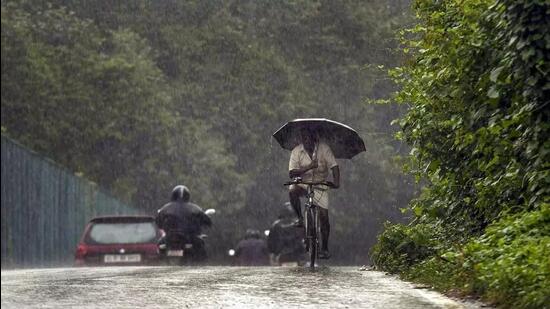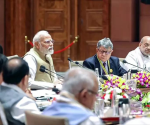India to become first with hi-res global weather forecast system

India is set to become the first country in the world to possess a fully indigenously developed high-resolution global weather forecasting system.

Developed by the Indian Institute of Tropical Meteorology (IITM), Pune, the Bharat Forecasting System (BFS), also known as the High-Resolution Global Forecast Model (HGFM), operates at a 6-km resolution over global tropics (the forecasting system covers the tropical regions of the globe, which are typically located between 30 degrees South latitude and 30 degrees North latitude) compared to the current 12-km global forecast system (GFS) model used in India. This model provides more detailed forecasts of weather events such as heavy rainfall and cyclones.
“India will be the only country in the world to possess a high-resolution (~6 km) global model developed completely by indigenous scientists, without any dependencies on foreign centres or institutes,” said a senior official from the Ministry of Earth Sciences, adding that the BFS, will be formally released on Monday in New Delhi.
Also Read: Southwest monsoon likely to arrive in Kerala over the next 4-5 days: IMD
In the backdrop of climate impacts, the country has been witnessing an increase in the frequency and intensity of extreme weather events, said Parthasarathy Mukhopadhyay, senior retired scientist of IITM (currently at IISER, Berhampur) and a key developer of the model. “The Bharat Forecast System is a game-changer in this context, providing high-resolution forecasts that will help both disaster managers and local communities prepare effectively, on a scale that no other country possesses at this point.”
On Saturday, the IMD announced the early onset of the southwest monsoon over India. The monsoon advanced into Kerala, parts of Karnataka and several other regions ahead of the normal onset date of June 1. The IMD reported further monsoon progress into Goa, Maharashtra, Andhra Pradesh, Karnataka, northeastern states, and parts of the Bay of Bengal and sub-Himalayan regions over the next few days.
Also Read: IMD: Monsoon arrives in Kerala, earliest onset since 2009
“The southwest monsoon has set in over Kerala on May 24, 2025, marking the earliest onset since 2009. All the key atmospheric and oceanic conditions for a classical monsoon onset have been favourable. We have observed the formation of a low-pressure area, strengthening of the westerly winds at lower levels, establishment of a well-defined monsoon trough, and enhanced moisture transport. The presence of a vortex and a depression over the Arabian Sea has further facilitated the monsoon advance. This combination of factors has contributed to a highly accurate forecast, and we expect the monsoon to progress further into Goa, Maharashtra, Karnataka, and other parts of southern India over the next 2–3 days,” director general of IMD Mrutyunjay Mohapatra said.
The early monsoon arrival highlights the importance of high-resolution, timely forecasts, added Mukhopadhyay. “With the Bharat Forecast System, we will be better positioned to anticipate and respond to such shifts.”
The BFS has been running experimentally since June 2022 at IITM and has demonstrated improved accuracy in forecasting cyclone tracks and intensities, as well as extreme rainfall events, said Mukhopadhyaya. Its launch marks a milestone not only for Indian meteorological research but also globally, placing India among the world’s leading nations in weather forecasting capabilities.
Also read: Monsoon in Kerala by May 27: IMD
One of the system’s unique features is its open-access approach, offering free availability to meteorological researchers and practitioners worldwide. “We believe that opening up the system to the global community will foster rapid advancements in weather prediction science,” Mukhopadhyay said. “This is not just about India but about contributing to global meteorological research and preparedness.”
The BFS’s focus on the tropics, where deep convective clouds and high-impact weather are common, makes it particularly relevant for a country like India, where localised weather extremes can have far-reaching impacts on lives and livelihoods. The enhanced resolution will enable forecasts at the sub-block level, providing detailed, actionable information for disaster preparedness and response.
Developed entirely by IITM scientists, with informal inputs from the European Centre for Medium-Range Weather Forecasts (ECMWF) and other institutions, the BFS reinforces India’s growing capacity in scientific research and operational forecasting. Union minister of earth sciences Jitendra Singh along with senior officials from the ministry, IITM, and the IMD will be present at the formal launch on May 26. “This development marks a landmark and critical step forward in India’s meteorological capabilities,” Mukhopadhyay added. “It enhances not just our scientific standing, but also the preparedness of communities and disaster management authorities who depend on accurate, timely forecasts.”















